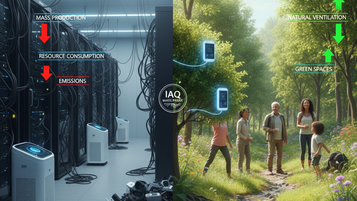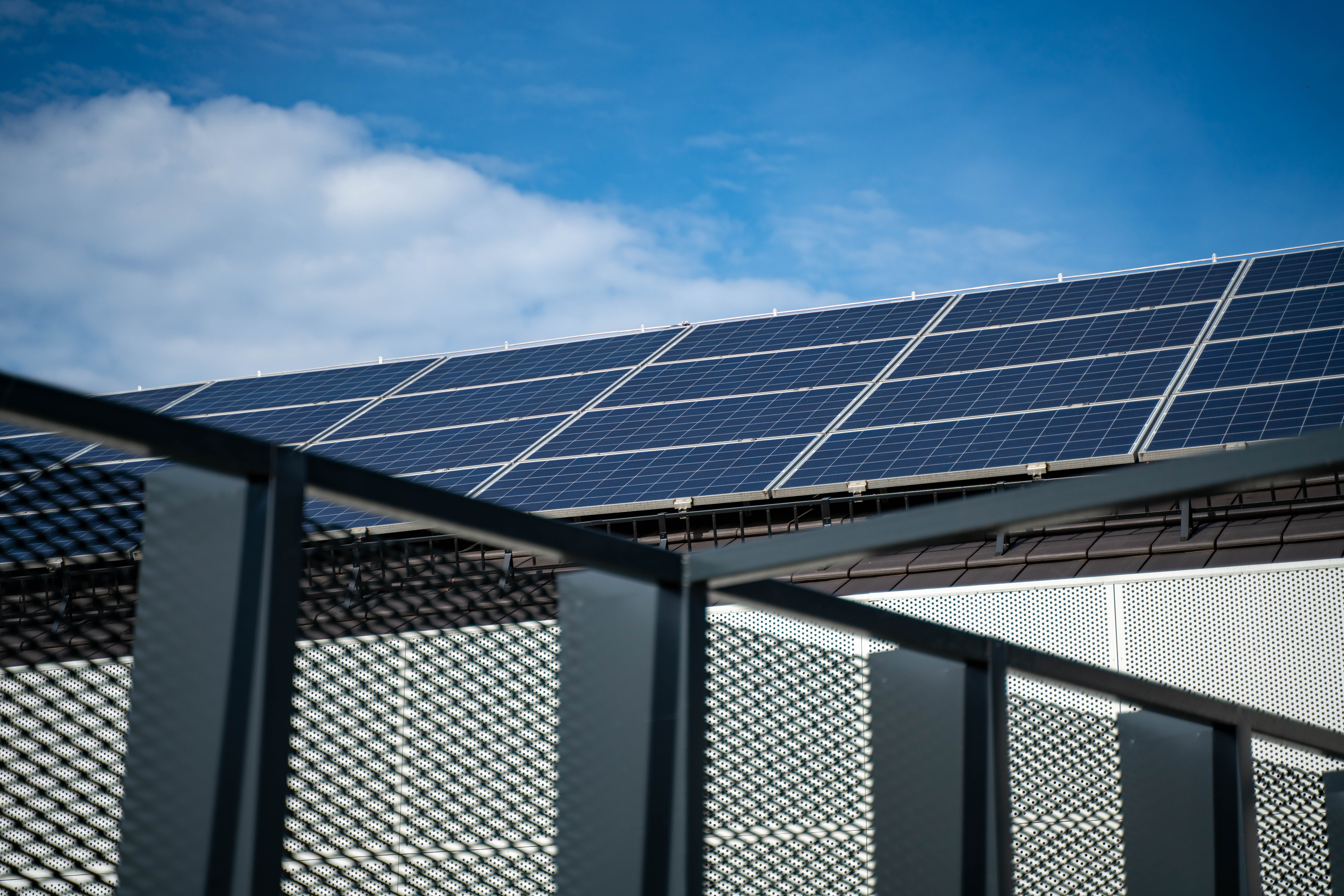
🏢
Have you ever wondered what buildings might look like in the future? Imagine a world where buildings aren't just places to live and work, but are sophisticated energy-saving machines. A world where every building contributes to protecting the environment and mitigating the effects of climate change.
This reality is no longer distant. With rapid technological advancements and a growing awareness of the importance of environmental protection, energy-efficient buildings are becoming an irreversible trend in the construction industry. However, the path to this future is not without its challenges. From cost barriers to the complexity of integrating new technologies, the construction industry faces numerous issues to address.
In this article, we will explore the promising future of energy-efficient buildings. From the latest design trends to the advanced technologies reshaping the way we construct, we will delve into the benefits, challenges, and policies driving the development of this building type. Join us as we step into the world of green architecture and discover how it will shape our future!
🌿🏗️

The Trend of Energy-Efficient Building Design
In today's world, the trend of energy-efficient building design is rapidly gaining momentum, offering numerous benefits to both the environment and people. Let's explore the key trends shaping the future of sustainable architecture.
A. Intelligent Building Materials Intelligent building materials play a crucial role in enhancing a building's energy efficiency. Some advanced materials include:
- Smart glass: Automatically adjusts transparency
- Self-cooling concrete: Reduces indoor temperatures
- Phase-change materials: Effectively absorb and release heat
B. Harnessing Natural Light and Ventilation Optimizing natural light and ventilation can significantly reduce the need for artificial lighting and air conditioning. Common solutions include:
- Large windows and skylights
- Natural light tubes
- Cross-ventilation systems
C. Green and Sustainable Architecture Green architecture focuses on integrating natural elements into building design, creating healthier living and working environments. Some examples include:
- Green roofs and vertical gardens
- Using recycled and eco-friendly materials
- Harmonious design with the surrounding landscape
D. Automated Energy Management Systems IoT and AI technologies are revolutionizing how we manage energy in buildings. Intelligent systems can:
| Feature | Benefit |
| Automatic temperature control | Optimizes energy usage |
| Intelligent lighting control | Reduces unnecessary electricity consumption |
| Energy data monitoring and analysis | Identifies areas for improvement |
Thanks to these innovative design trends, the future of energy-efficient buildings is looking up. In the following section, we will examine the advanced technologies driving sustainable construction.

Advanced Technologies in Energy-Efficient Buildings
With the continuous advancement of technology, energy-efficient buildings are being equipped with the most cutting-edge solutions. Let's explore the groundbreaking technologies shaping the future of green construction.
A. Artificial Intelligence in Energy Management
Artificial intelligence (AI) is revolutionizing how we manage energy in buildings. AI systems can:
- Analyze real-time energy consumption data
- Predict energy demand and adjust automatically
- Optimize the use of energy-consuming devices
B. Advanced Energy Storage Systems
New-generation batteries and energy storage devices enable buildings to:
- Store excess energy from renewable sources
- Utilize stored energy during peak demand periods
- Reduce reliance on the traditional power grid
C. Smart, Thermochromic Windows
Smart window technology offers significant benefits:
- Automatically adjust transparency to control light and heat
- Reduce the need for air conditioning
- Enhance user comfort
D. Waste Heat Recovery Systems
Advanced waste heat recovery systems can:
- Capture waste heat from equipment and processes
- Convert waste heat into useful energy
- Significantly reduce heating and cooling costs
E. Integrated Solar Panels
Integrated solar panel technology opens up new possibilities:
- Directly integrated into building materials
- Increase the solar energy collection area
- Improve the aesthetics of solar energy systems
| Technology | Main Benefits | Challenges |
| Artificial Intelligence (AI) | Optimizes energy consumption | High initial cost |
| Energy storage | Reduces reliance on the grid | Battery lifespan |
| Smart windows | Automatically controls temperature | High upfront cost |
| Waste heat recovery | Reuses waste energy | Technical complexity |
| Integrated solar panels | Increases solar energy collection area | Lower efficiency compared to traditional panels |
These cutting-edge technologies not only boost energy efficiency but also enhance the living experience in modern buildings. Next, we will explore the particular benefits that these sustainable structures provide for residents and the ecosystem.

Benefits of Energy-Efficient Buildings
A. Improved Health and Productivity
Energy-efficient buildings not only protect the environment but also offer numerous benefits for human health and productivity. Advanced ventilation systems and environmentally friendly building materials improve indoor air quality, reducing the risk of respiratory diseases. Optimized natural lighting also contributes to boosting mood and productivity.
B. Environmental Protection
Energy-efficient buildings play a significant role in mitigating negative environmental impacts. By efficiently using resources and energy, they help to:
- Reduce carbon emissions
- Conserve natural resources
- Minimize construction waste
C. Increased Property Value
Investing in energy-efficient buildings not only benefits the environment but also increases property value. The following comparison table illustrates the difference:
| Criteria | Conventional Building | Energy-Efficient Building |
| Market Value | Average | 10-20% higher |
| Sales/Rental Speed | Normal | Faster |
| Ability to Attract Tenants | Average | High |
D. Reduced Operating Costs
One of the most significant benefits of energy-efficient buildings is the ability to reduce operating costs. This is achieved through:
- Smart HVAC and lighting systems
- Effective insulation
- Utilization of renewable energy sources such as solar power These factors contribute to significantly reducing monthly utility bills, providing long-term benefits for both property owners and tenants.
With such substantial benefits, it is no surprise that energy-efficient buildings are becoming a trend in modern construction. Next, we will examine the challenges in developing this type of building.

Challenges in Developing Energy-Efficient Buildings
Despite the numerous benefits of energy-efficient buildings, their development faces significant challenges. Let's examine three primary obstacles in this field.
A. Difficulties in Retrofitting Existing Buildings
Retrofittings older buildings to meet modern energy-efficiency standards is a major challenge. Difficulties include:
- Existing structures may not be compatible with new technologies
- High retrofitting costs
- Disruption of building operations during the upgrade process
B. Shortage of Skilled Workforce
The energy-efficient building industry requires specialized knowledge and skills. However, there is a current shortage of:
- Engineers and architects with expertise in energy-efficient design
- Skilled workers for installation and maintenance of energy-efficient systems
- Building energy management consultants
C. High Initial Investment Costs
Although offering long-term cost savings, energy-efficient buildings often require significant upfront investments. This presents challenges related to:
| Aspect | Challenges |
| Financial | Difficulty in mobilizing large initial investments |
| Time | Longer payback period compared to conventional construction |
| Risk | Higher risk due to new, unproven technologies |
Overcoming these challenges requires a multi-faceted approach involving government, industry, and educational institutions. By investing in workforce development, providing financial incentives, and educating the public, we can pave the way for a future dominated by energy-efficient buildings.

Policies and Regulations Promoting Energy-Efficient Buildings
With the growing trend of energy-efficient buildings, governments and related organizations have introduced various policies and regulations to foster this development. Let's delve into the key measures being implemented.
Green Building Certifications and Ratings
Green building certification systems such as LEED, BREEAM, and EDGE are becoming increasingly prevalent. These certifications not only assess energy performance but also consider other aspects of the building, including:
- Water efficiency
- Indoor environmental quality
- Sustainable material selection
- Waste management
Minimum Energy Performance Standards
Many countries have enacted regulations setting minimum energy performance standards for new and retrofitted buildings. The table below compares some common standards:
| Standard | Region | Target for energy reduction |
| ASHRAE 90.1 | North America | 30% compared to 2004 |
| EPBD | European Union | Nearly zero-energy buildings by 2030 |
| GB 50189 | China | 65% compared to conventional buildings |
Financial Incentives for Energy-Efficient Projects
To encourage investment in energy-efficient buildings, many governments have implemented financial incentives such as:
- Tax breaks for projects that achieve green building certification
- Subsidies for the installation of renewable energy systems
- Low-interest loans for energy retrofitting projects
- Rebates for high-performance buildings
Green Building Standards
Green building standards are being continuously updated and expanded to meet the growing demand for energy-efficient buildings. These standards provide detailed guidance on:
- Passive design to optimize natural light and ventilation
- Selection of efficient HVAC systems
- Integration of renewable energy
- Use of advanced insulation materials With these policies and regulations, the construction industry is shifting towards a future of energy-efficient buildings, playing a crucial role in reducing environmental impact and optimizing operational costs.

Energy-efficient buildings are shaping the future of the construction and architecture industries. From innovative design trends to cutting-edge technologies, these structures offer significant environmental and economic benefits, while also presenting numerous challenges. However, with the support of appropriate policies and regulations, the development of energy-efficient buildings is becoming an irreversible trend.
We need to continue to invest in research, innovation, and development in this field to create a more sustainable future for our cities and communities. By adopting energy-efficient building solutions, we can not only protect the environment but also enhance the quality of life for everyone.
Tags
Related news

Air Quality: Standards Are the Branches, the Environment Is the Root
According to current documents, including IAQ white papers, one clear reality emerges:there is still no unified global standard for indoor...
View detail
10 Innovative Ways to Use IAQ Data for Healthy Buildings
Closing the Gap Between Data and Action For forward-thinking organizations, improving Indoor Air Quality (IAQ) is a strategic priority. IAQ...
View detail
Designing the Mindful Home: From Matter to Energy
A mindful home is not merely a place to live — it is a conscious space, where every line, material,...
View detail





